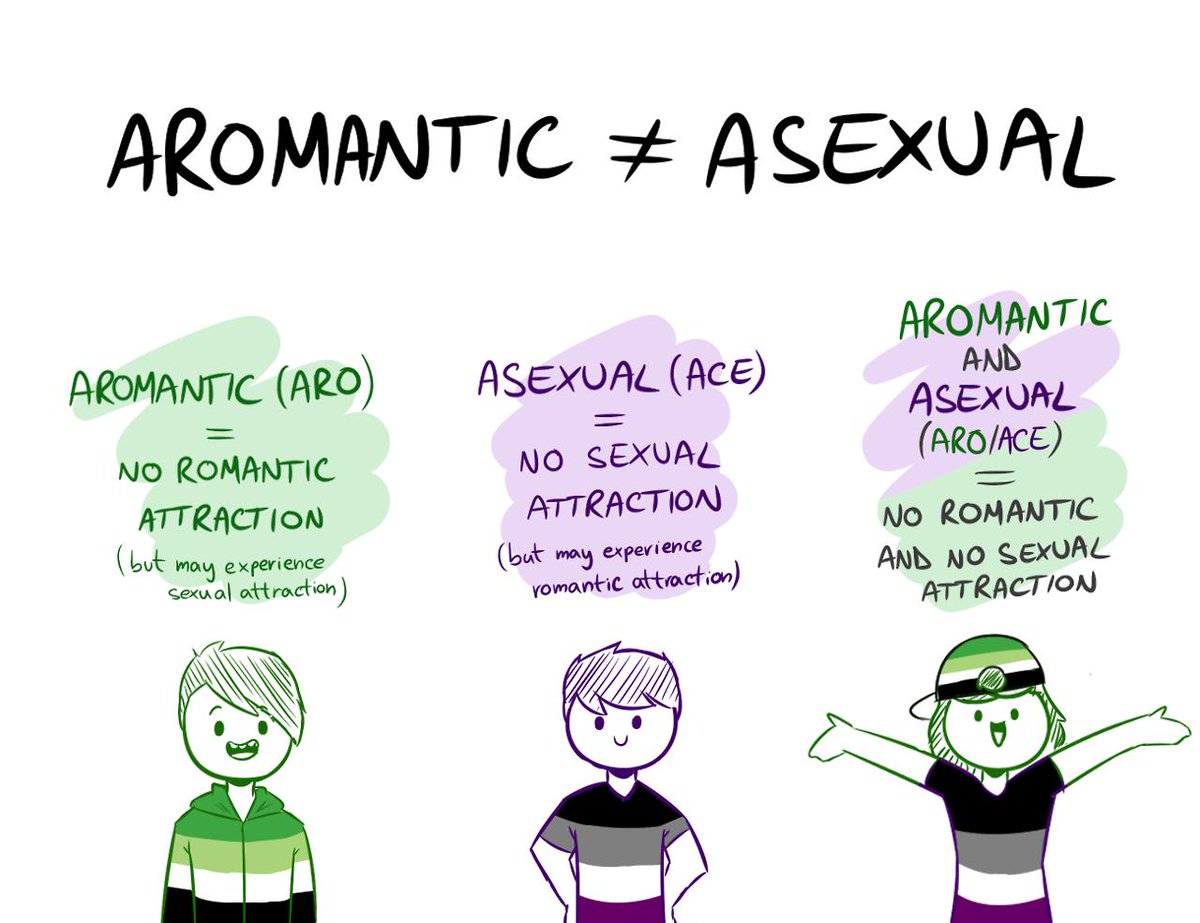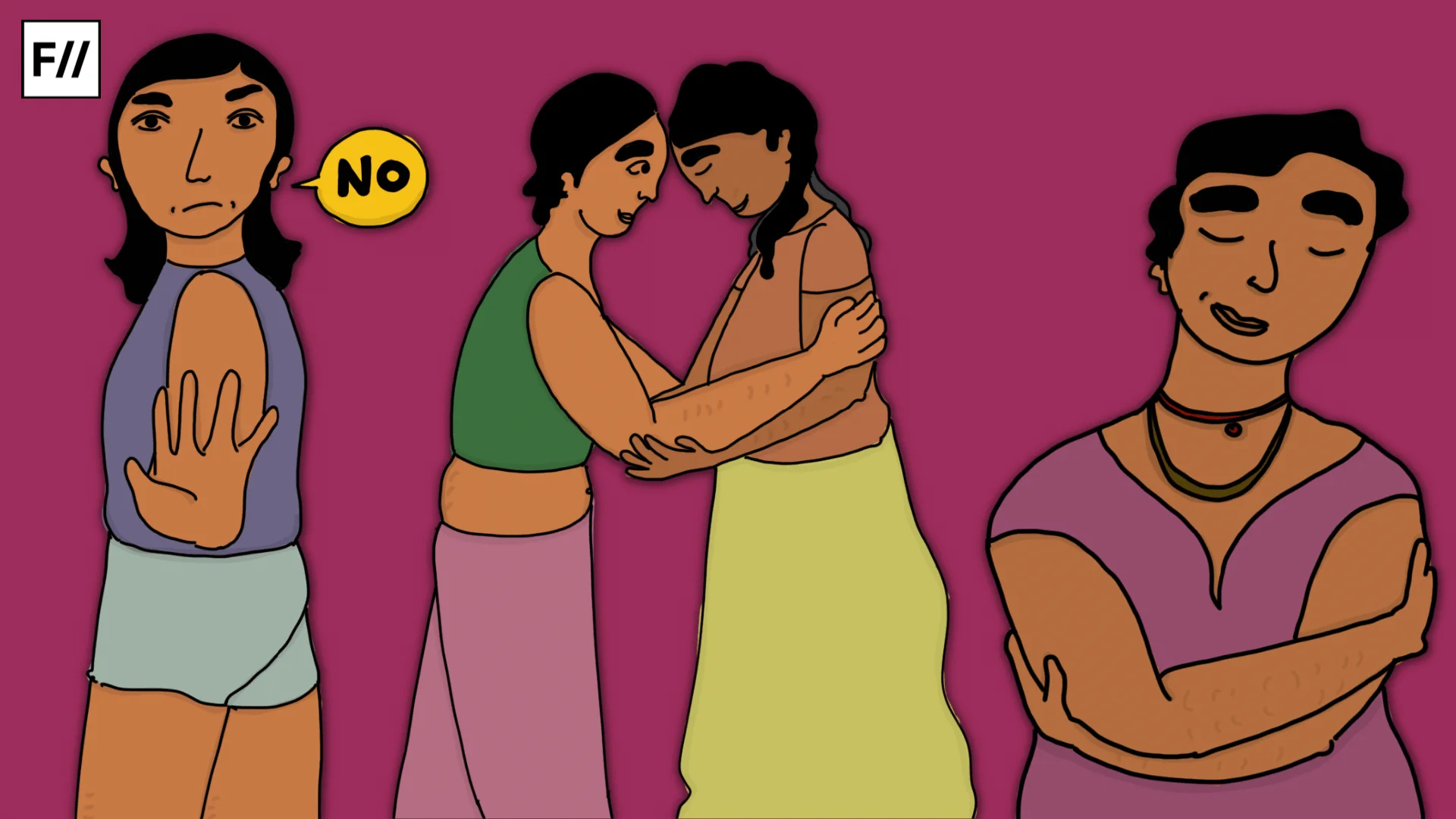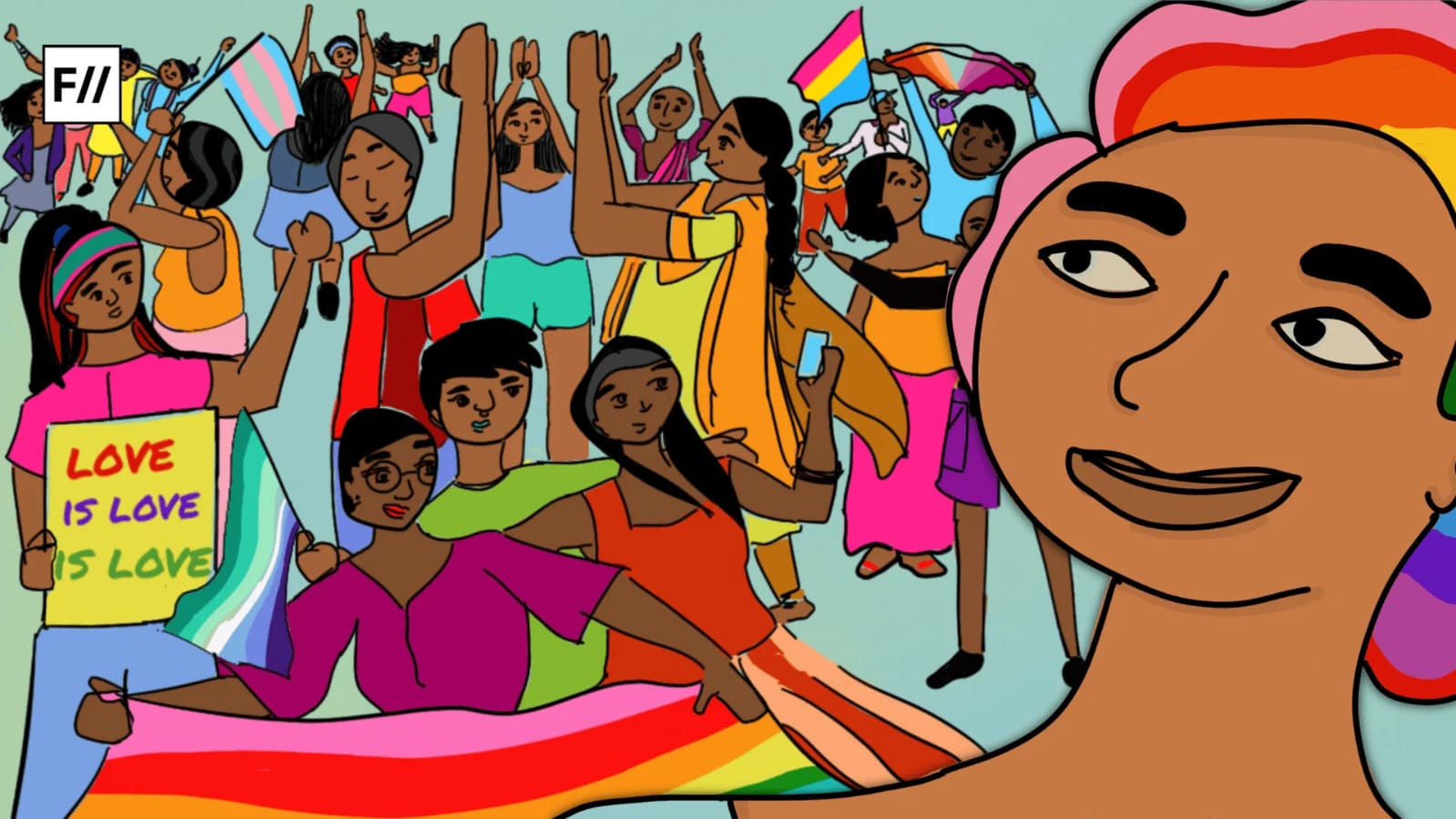Editor’s Note: FII’s #MoodOfTheMonth for June 2022 is Pride Solidarity. We invite submissions on the many layers of this theme throughout the month. If you’d like to contribute, kindly refer to our submission guidelines and email your articles to sukanya@feminisminindia.com
The LGBTQIA+ movement has constantly seen the erasure of trans, aromantic and asexual people’s experiences. The focus has mostly been on gay men, with them being the face of the movement, and even lesbians are often underrepresented in this context.
We will thus, try and understand what aromanticism stands for its history, and its present social situation. Firstly, to define romantic attraction, it is the desire to have emotional contact and interaction with a partner. Romantic love often involves feelings of passion, an intense desire for closeness, and emotional intimacy.
While the mainstream idea is that everyone wants to be in a romantic relationship and prefers dating, and these are considered universal goals of life, not everyone prefers or desires to experience a romantic relationship. The former idea is known as allormanticism, where people experience romantic attraction, whereas, the latter definition is about aromanticism.
Aromantic people feel little or no romantic attraction to others. They may or may not feel sexual attraction as well. Thus, aromantic people can be categorised into two groups: aromantic asexual individuals and aromantic sexual individuals. Aromantic people may also use the shorthand “aro” to describe their orientation. If a person’s interest in romantic or sexual attraction on the aromatic spectrum changes over time, they may orient themselves as aroflux.

There is no universal guide on how an aromantic person must feel. Everyone’s experiences are unique to themselves and their feelings, and definitions of romantic attraction may vary. Some signs that a person may be aromantic include: they don’t experience feelings of romantic attraction, they feel that to feel complete or fulfilled, they don’t necessarily need a romantic relationship. They don’t have “crushes” or crave being “in love” with someone else. They are hardly able to relate to romantic stories
An American Association of Sexuality Educators, Counselors, and Therapists (AASECT) certified sex and relationship therapist, Amanda Pasciucco, says, “Aromantic, is an orientation where someone does not feel romantic attraction toward other people.” “It signifies the ‘A’ on the LGBTQIA+ spectrum,” adds Debra Laino, Ph.D., and AASECT certified clinical sexologist and relationship coach. “An aromatic person can still feel sexual attraction, but they might not identify with the way romance is often presented in current media and culture”, says Laino.
Take, for instance, Claire (name has been changed to protect the privacy of the respondent), a 20-year-old living in Seattle said that they realised they were aromantic when their partner said, “I love you” for the first time. “I suddenly realised, Oh, we don’t mean the same thing when we use this word,” they told Women’s Health. “They were talking about romantic feelings, and I wasn’t,” Claire recalls.
Claire felt that their love for their partner was the feeling they have for a close friend. They did not feel the romantic love that we normally understand it as. “They might have other things that turn them on, like a physical touch, but their desire would not come from a romantic connection,” Laino explains, reiterating the fact that such feelings are normal for an aromantic person.
As mentioned earlier, aromanticism exists on a spectrum. The terms that people may use to identify themselves within this spectrum include the following: Demiromantic people – individuals who feel romantic attraction only after forming an emotional bond with their partner, Lithoromantic or akoiromantic people – those who prefer one-sided feelings of romance, i.e. they feel romantic attraction, but when the same feeling is reciprocated by the other person, their attraction fades.
Grey-aromantic people – although they do experience romantic feelings, such feelings are only experienced under certain specific conditions. They fall in between the romantic-aromantic spectrum. Recipromantic – they feel romantic attraction only when they know the other person also has the same feelings. Quoiromantic people are those who are unable to tell the difference between romantic and platonic attractions. Cupioromantic people are aromantics who want romantic relationships.
Also read: Experiencing Love As An Aromantic Asexual (Aroace) Person
Characteristics of aromanticism
There is no universal guide on how an aromantic person must feel. Everyone’s experiences are unique to themselves and their feelings, and definitions of romantic attraction may vary. Some signs that a person may be aromantic include: they don’t experience feelings of romantic attraction, they feel that to feel complete or fulfilled, they don’t necessarily need a romantic relationship.
They don’t have “crushes” or crave being “in love” with someone else. They are hardly able to relate to romantic stories.
As mentioned earlier, alloromanticism is the norm of the society and anyone who deviates from that norm faces societal consequences, isolation, and repercussions. People are continuously expected to have romantic attraction and eventually marry, ‘get settled‘, and have children. Even those who do not want to follow this norm, are forced by their families and/or the society as a whole, to do it anyway. Those who do not comply, are often made to feel that there is something wrong with them or that they are missing out
Difference between aromanticsm and asexuality
In general, people are more aware of the term ‘asexual’ than ‘aromantic’. Although they may present as similar, they do not have identical meanings and are not synonymous. Aromanticism is defined by a person’s level of romantic attraction, whereas, asexuality is about sexual attraction, where a person’s drive for having sex is considered.
An aromantic person’s sexual orientation doesn’t make them less or more of a valid member of the aromantic community. If an aromantic person feels sexual attraction, they are still aromantic. Similarly, some asexual people may not desire sex but can still want romance. Both orientations can also change over time or even frequently.
There is little research available on aromanticism, and the distinctions between romantic and sexual orientation are not fully understood. Since these terms have very close meanings and are intertwined, people sometimes experience difficulty in differentiating them in conventional terms, thus, making it difficult to further study them. More research and academic tools must be devised to accurately understand and record the feelings of people in the aromantic spectrum.

Obstacles
As mentioned earlier, alloromanticism is the norm of the society and anyone who deviates from that norm faces societal consequences, isolation, and repercussions. People are continuously expected to have romantic attraction and eventually marry, ‘get settled‘, and have children.
Even those who do not want to follow this norm, are forced by their families and/or the society as a whole, to do it anyway. Those who do not comply, are often made to feel that there is something wrong with them or that they are missing out.

Amatonormativity is a term that has been coined to describe society’s expectations concerning romance. It has been used to describe the pressure to find and prioritise romance, marriage, and monogamy. Some researchers have suggested that amatonormativity creates a social stigma surrounding being single and can pressurise people into entering or staying in unhealthy relationships.
To conclude, to create safe spaces for every individual to live their lives freely and without any fear or pressure, we must understand that romance is not a ‘rule’ that needs to be followed and thus, respect aromantic people for their choices. Life is an enterprise that extends beyond romance and partnership for many people, and it is important that as a society, we make space for people who wish to exercise their own romantic choices.
Also read: I’m Aromantic Asexual And This Is What It Means
Featured Image Source: HER
About the author(s)
Meghna(she/her) is a humanities student from St. Xavier's College, Mumbai who is fond of everything sociology and psychology. She loves animals, reading and art




